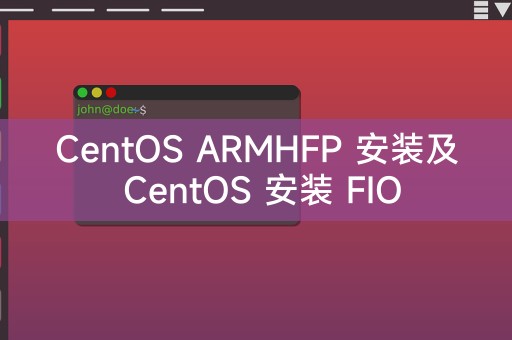
With the development of technology, Linux systems are increasingly used in various fields, and CentOS, as one of the Linux distributions, is also very popular. This article will introduce how to install FIO on CentOS ARMHFP, and help you install FIO on Linux. Provide guidance on storage performance testing in the environment.

ARMHFP is a type of ARM architecture with hardware floating-point processing capabilities. To install on CentOS ARMHFP, you first need to obtain CentOS's ARMHFP image file, and then use the burning tool to write it to a storage device, such as an SD card or USB flash drive. After the burning is completed, insert the storage device into the ARMHFP device, start the device and follow the prompts to install.
FIO is an open source storage performance testing tool that can simulate various read and write modes to test the performance of storage devices. Installing FIO on CentOS is very simple. You can follow the following steps Completion:
Open the terminal and log in as the root user. Run the following command to install FIO:```shell
yum install fio
```
After the installation is complete, you can run the following command To verify whether FIO is installed successfully:fio --version
If the version number of FIO is output, it means the installation is successful.
After the installation is completed, you can use FIO for storage performance testing. You can simulate various read and write modes by writing FIO configuration files, such as sequential read and write, Random read and write, etc., to test the performance of the storage device. Before running the test, you can view the help document and sample configuration file of FIO by running the following command:
fio --help
fio --example=randwrite
The above commands will output FIO's help document and sample configuration file randwrite.fio respectively, which can be modified and adjusted as needed.
This article introduces the method of installing FIO on CentOS ARMHFP and the basic steps of using FIO for storage performance testing. Through the guidance of this article, I believe that everyone can successfully complete the installation and testing work.
Share a little LINUX knowledge with you: The file permissions of the Linux system are divided into three types: read, write and execute, represented by the letters r, w and x respectively. Each The permissions of each file or directory can be viewed through the command ls -l. For example: -rw-r--r-- means that the file owner has read and write permissions, while other users only have read permissions.
The above is the detailed content of CentOS ARMHFP installation and CentOS installation FIO. For more information, please follow other related articles on the PHP Chinese website!
 unicode to Chinese
unicode to Chinese
 Introduction to xmpp protocol
Introduction to xmpp protocol
 What to do if the CPU temperature is too high
What to do if the CPU temperature is too high
 Usage of sprintf function in php
Usage of sprintf function in php
 How to open mds file
How to open mds file
 The role of the formatfactory tool
The role of the formatfactory tool
 JS array sorting: sort() method
JS array sorting: sort() method
 The latest ranking of the top ten exchanges in the currency circle
The latest ranking of the top ten exchanges in the currency circle
 How to check if port 445 is closed
How to check if port 445 is closed




